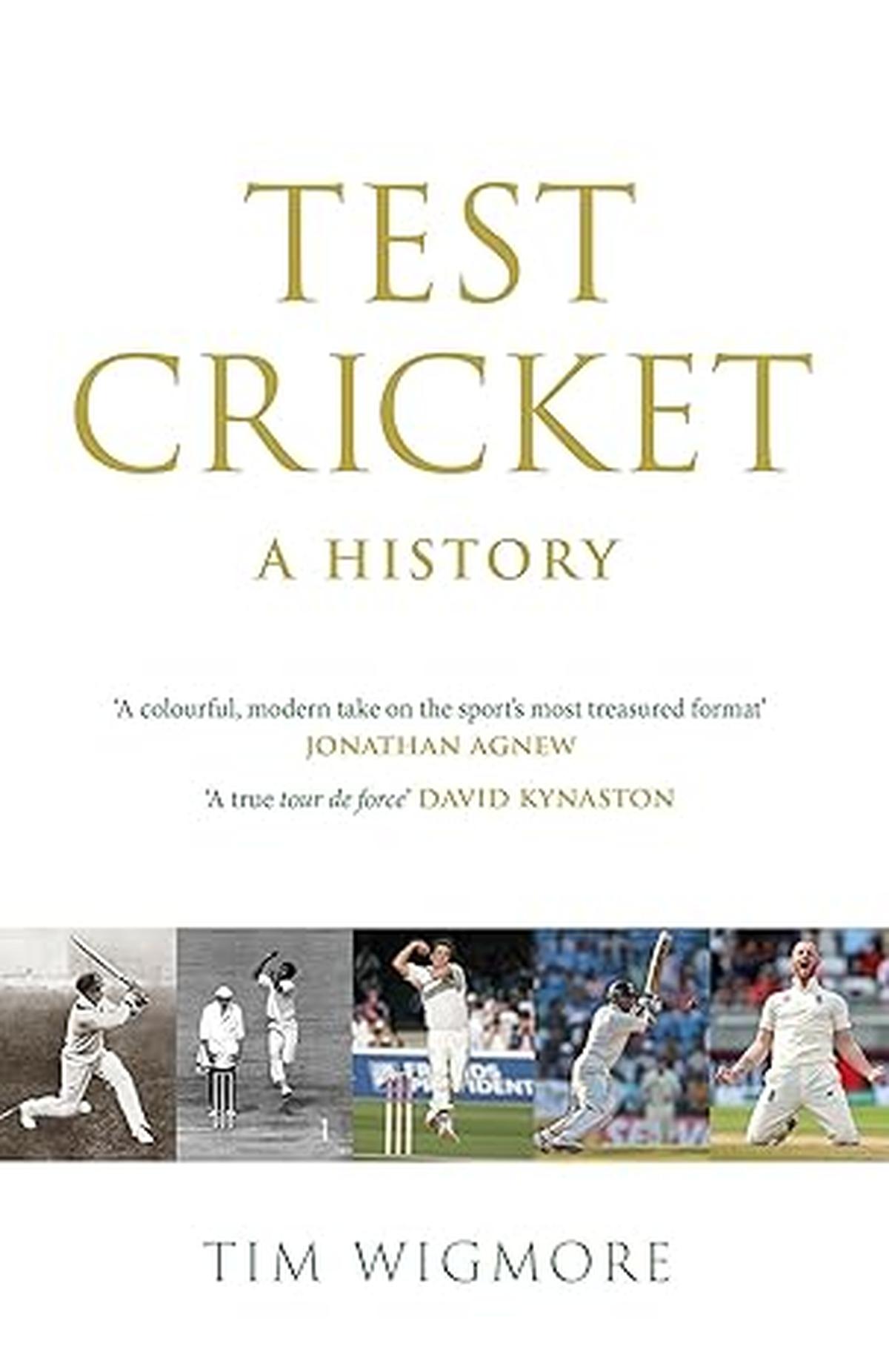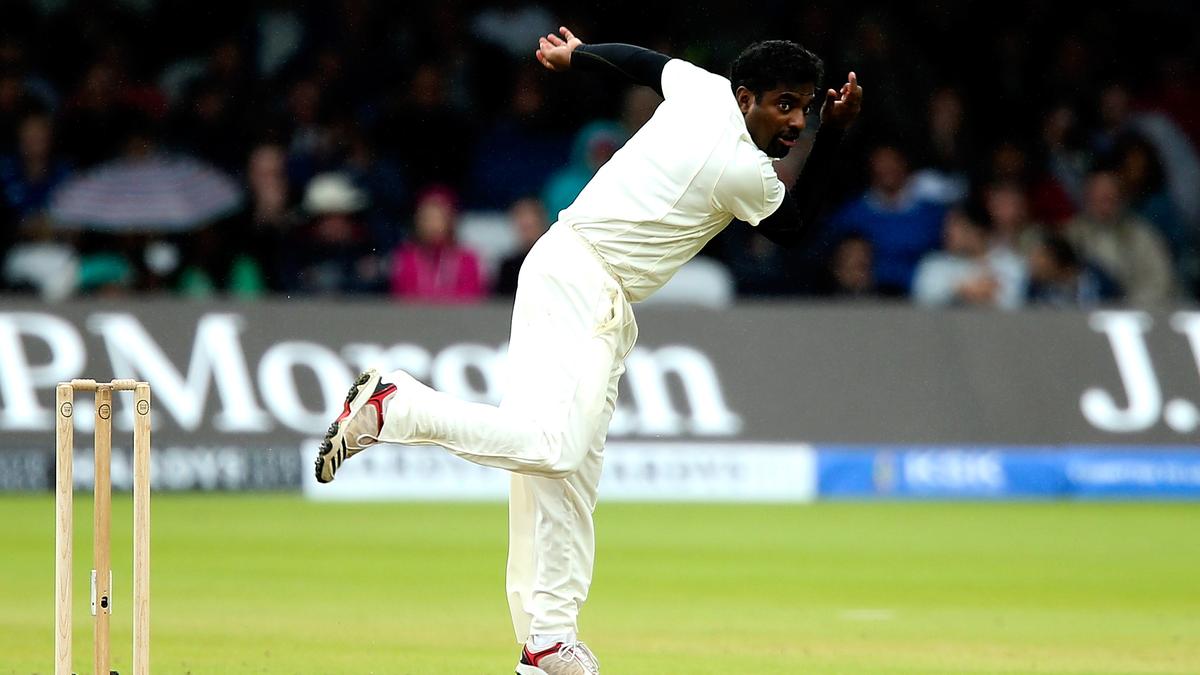The book also examines the chucking controversy that demonised Sri Lankan cricketer Muthiah Muralitharan.
| Photo Credit: Getty Images
In his introduction to Test Cricket A History, author Tim Wigmore says the book is “meant to be read sequentially, as narrative history.” It is helpful advice for taking on 539-pages of a timeline which covers almost 150 years. Test cricket nuts could read it in any manner they like. Back to front, sideways or a languorous cherry-pick of themes, events, personalities through 35 chapters and once again fall head over heels with this capricious, alluring sporting form. Which may appear archaic and out-of-step but has been, as Wigmore shows and tells, adaptive and reflective of its time.
It is cricket that held the first officially-recognised international sporting contest. Ever. USA vs Canada, Manhattan 1844. Everything — world cups, continental championships, globalised sporting hoo-ha, Olympic medals tables, bitter national rivalries — only sprang into life later.

Enough preening. That Manhattan match over three days was not considered a Test — that came only 33 years later — but that factoid needed an airing. The duration of Tests has gone from three to four to five days to timeless (on till 1945 in Australia). Today they look like three-day high-speed confrontations with much mulling over returning to a four-days format. Again.
Falling allure?
In March 2026 when it will hit 150, Test cricket faces perhaps its roughest tide. Earlier this year, the World Cricketers Association released its annual report and player survey findings interviewing 328 players, male and female, mostly international. Forty-nine per cent of them believed that Test cricket is the most important format to play in. The bracket that followed was this: the 49% was “down from 86% in 2019.”
Over the last six years, the relevance of Test cricket has fallen to just below half amongst its very practitioners. The format may have often been suspected of dying every decade but we are perhaps at its most critical moment and not merely because it is up against a shorter format. That has happened before — with 50-over cricket and one-day internationals. Today, it is Twenty20 franchise cricket that has burgeoning commercial value and popular appeal amongst players and its audience. The prospect of T20 eating into chunks off the international calendar, replacing bilateral with franchise competition and hoovering up young talent is very real. Cricket hinges its global ambitions on T20 as it returns to the Olympics in Los Angeles 2028. We have been here before and Wigmore has proof that we — aka administrators — stuffed it.
At the turn of the century the United States was “almost certainly among the four strongest cricket nations” (plus Australia, England and Canada) even as the game grew in Argentina. “Through the mixture of neglect and deliberate exclusion, the chance to develop a bigger and more geographically diverse game was lost.” The inclusive, expansive world view of the book needs to be the lens through which Test cricket can tackle the decade ahead. Not the Big Three cling-wrapping themselves and Tests into tinier and tinier cliques.
Fresh eyes
The book’s biggest asset is that it is a 150-year-old story told through a young voice. Wigmore, 34, has grown up with 21st century cricket and is free of the love and loathings of the previous century. Little is considered ‘holy’ and therefore, even less is deemed tainted. This frees the book of many tired first-world readings of issues that have divided the game and the refusal to look objectively at T20.
Take one random example: there are enough references of how poor umpiring affected outcomes and careers and therefore neither neutral umpiring nor DRS (decision review system) is anathema. Wigmore tells of a Royal Statistical Society paper which analysed Tests between 1986 to 2012: with two home umpires, visiting teams were 16% more likely to be given out lbw. With one home and one neutral the figure fell to 10% and with two neutrals 1%. The book is full of such gems. Like how scientists have proved that swing bowling has very little to do with cloud cover.
Reverse swing, with or without bestial ball tampering, “has aided one of the most beguiling sights in Test cricket.” Then there’s the chucking controversy that demonised Muthiah Muralitharan at top volume. Only for sports labs to discover that bowlers with even the most ‘pure’ actions were also ‘bent’ which then led to a change in the law. The commonly-bandied false-ism is that this was done ‘to accommodate Murali’. The fact is that the law was discovered to be outmoded and needed a fresh benchmark.
These are only some slices of the feast offered by this vibrant, global history of the oldest form of cricket. Told across decades and vast spans of geography, using history, memoir, stats, science and the voices of greats living and gone, it is destined to be a classic. Test Cricket is in a word, monumental. If you’re looking for two, add terrific.
The reviewer spent three decades reporting sport for various organisations, but now follows and writes about sport on her own terms.
Test Cricket A History
Tim Wigmore
Hachette India
₹899
Published – May 26, 2025 03:25 pm IST
